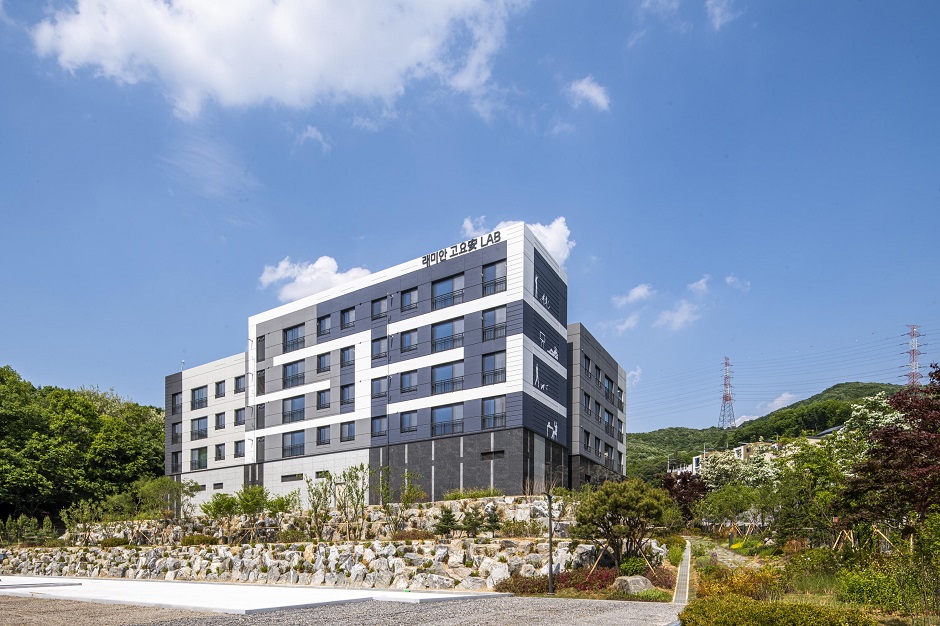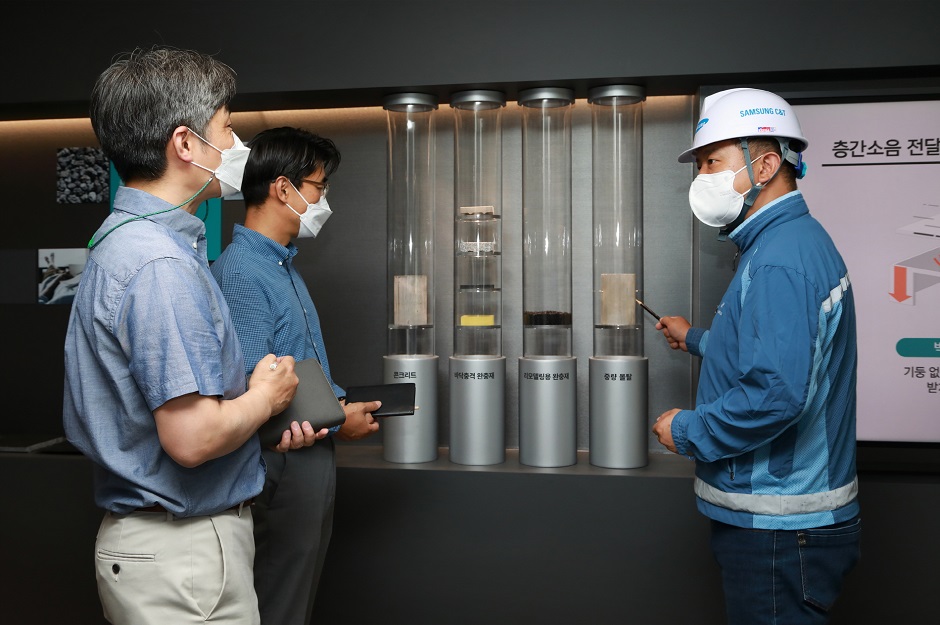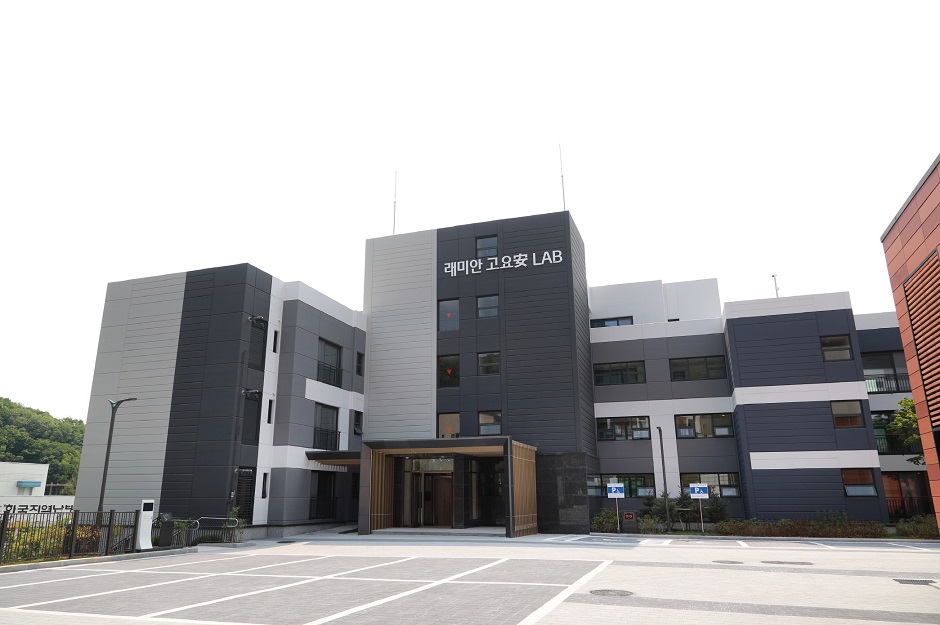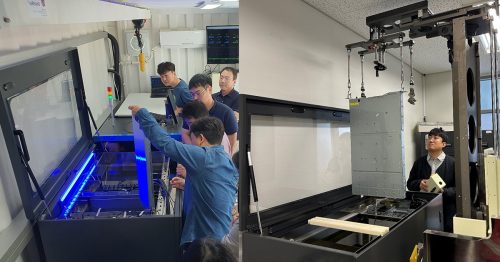Living in a high-rise apartment has many conveniences. However, you should be careful not to transmit noise downstairs. “Floor impact noise” which is that carries from an upper story to a lower story of a building, and it is a problem that many construction firms want to solve.
To that end, Samsung C&T Construction & Engineering Group has opened its own research facility dedicated to finding practical and feasible solutions to floor impact noise. This facility is known as Raemian Goyo-an Lab, which roughly translates to Raemian Silent Peace Lab (Raemian being the name of Samsung C&T’s premier apartment brand). It was opened on May 26 to give people an audible experience of floor impact noise, to aid understanding of relevant technologies, and to facilitate everything from research to demonstration.
Raemian Goyo-an Lab is the largest facility in Korea devoted specifically to reducing floor impact noise, boasting 4 floors above ground and a basement and a total surface area of 2,380 square meters.

Experiencing what downstairs neighbors hear
It can be difficult to predict what the sound from your activities like walking or working out at home sound like to neighbors downstairs. Raemian Goyo-an Lab has an experience zone where you can listening to a level of noise from daily activities generated upstairs. It is possible to hear different levels of floor impact noise depending on activity type and intensity, and also to experience varying levels of soundproofing depending on the type of noise dampening that is applied.

Finding the right combination to solve the problem
At Raemian Goyo-an Lab, floors of different thicknesses have been laid for testing purposes, varying from 210mm to 300mm. However, it is not just the construction of the floor or the performance of material(s) used in it, but the entire building structure that affects floor impact noise. Samsung C&T E&C Group has built 10 demonstration apartments where floor impact noise reduction technology research and demonstration are carried out, and in these, four different housing structures have been used: wall column, column and beam, mixed, and rahmen. Tests and demonstrations are being conducted on each of these four types to understand the process of noise transference.

This is the first time in the study of floor impact noise that the effects of different noise reduction technologies and construction types can be demonstrated through the combinations of floor materials with structure types. Using the same floor structure and materials, floor impact noise can be reduced by 3dB by increasing the thickness of the floor. However, since increasing the thickness of the slab adds extra weight to the load bearing structure, there must be limits. Therefore, Samsung C&T is focusing on finding the optimal technology and material within a similar range of thickness to come up with a practical solution.
Floor impact noise reduction technology developed at Raemian Goyo-an Lab has also been used in demonstrations. Some of the apartments have been built with a 300mm-thick floor slab that uses high-weight, high-flow materials effective in reducing noise between floors, and some with a floor structure that can reduce noise with an increase in only certain parts of the floor slab’s thickness.

Many hands make light work
Samsung C&T plans to make this research facility available to external institutes that are working on the same problem, and to actively share the technologies that are developed as a result of the research. In doing so, Samsung C&T is demonstrating its desire to focus on jointly solving social problems, rather than merely developing technology at the corporate level to become more competitive. To this end, at the ceremony to open Raemian Goyo-an Lab on May 26, Samsung C&T signed a business agreement with the Korea Institute of Civil Engineering and Building Technology (KICT). This agreement shows the decision by both organizations to cooperate with each other in conducting joint research on floor impact noise, in establishing technical standards, and in developing relevant policies.
President of Samsung C&T Oh Se-chul said, “Floor impact noise is a problem that can only be solved by gathering the expertise of not just industry, but also research institutes and academia,” adding, “By opening this research facility, Samsung C&T E&C Group plans to strive to become a cornerstone for solving social problems between different floors of buildings.”







